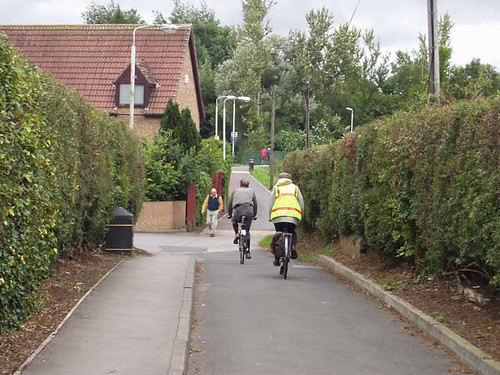
cc licensed ( BY ) flickr photo shared by miketually
Details:
1. Cycling Infrastructure
- Effective separation from cars is most desirable as long as there is no major sacrifice in directness and convenience.
2. Speed Differentials
- When sharing roads with cars, the speed differential between cars and yourself is important. Sometimes busier roads during peak hours are preferable as the cars are slower and pose less risk.
3. Cyclist Popularity
- There really is safety in numbers as motorists on common cycling routes become more aware of cyclists and key areas of interaction (such as at intersections).
- Ride the routes popular with cyclists during the times they are in use (e.g. daytime especially during commuting peak hours).
4. Confidence & Experience
- When you first start out you may ride further to take advantage of the safest routes (e.g. segregated, fewer cars).
- However, if the safest routes aren't the quickest and most convenient, once you have more confidence and experience with the
5. Expedience (directness, speed)
- Cities should be designed for people (see Desire Lines) so don't be relegated to indirect, poorly-designed cycling routes if there are more direct alternatives that are safe enough.
- However, taking the longer way round can make sense if it is more enjoyable and eliminates hills, stops and traffic.





